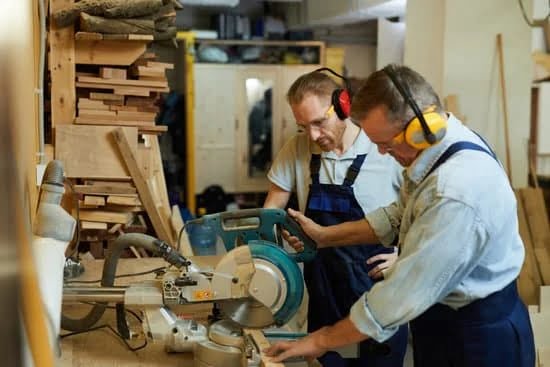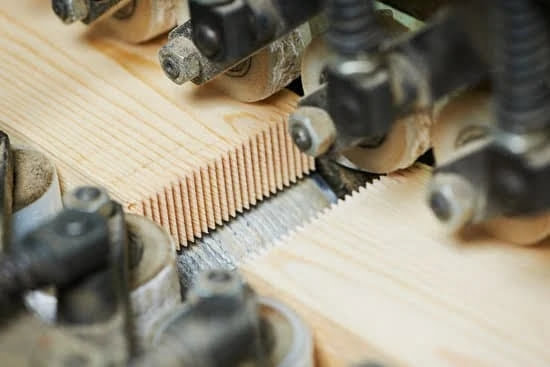Woodworking is a skilled craft that requires precision, attention to detail, and the right tools. One crucial tool that often gets overlooked but plays a significant role in enhancing efficiency and precision is the vise for a woodworking bench. A proper vise can make all the difference in securing workpieces firmly, allowing woodworkers to focus on their intricate tasks without worrying about stability or safety.
Having the right vise for your woodworking bench is essential because it not only provides a reliable grip on the workpiece but also ensures stability throughout the woodworking process. Whether you are cutting, shaping, or joining pieces of wood, a sturdy vise will hold them firmly in place, enabling you to carry out your operations with greater control and accuracy.
Furthermore, different types of vises cater to specific woodworking needs and offer unique features. This diversity allows woodworkers to choose a vise that aligns with their requirements and preferred working style. Understanding these different types of woodworking vises and their functionalities will empower craftsmen to select the most suitable option for their specific projects.
In this article, we will delve into various aspects related to woodworking vises – from understanding different types like front vises, tail vises, shoulder vises, and bench vises to exploring factors one should consider when choosing a vise. We will also provide insights into maintenance tips and offer recommendations for selecting the ideal vise based on specific woodworking specialties. By the end of this comprehensive guide, you will have gained valuable knowledge about what vise best complements your woodworking bench setup.
Understanding the different types of woodworking vises
Woodworking vises are essential tools for any woodworking bench as they provide stability, security, and precision in various woodworking projects. Understanding the different types of woodworking vises available can help woodworkers choose the right one for their specific needs.
One common type of vise is the front vise, which is typically mounted on the front edge of a workbench. Front vises are versatile and easy to install, making them popular among woodworkers. They feature adjustable jaws that can hold down stock securely, allowing for precise cuts and shaping. However, front vises may have limited jaw opening capacity and may not be suitable for working with longer pieces of wood.
Tail vises are another type of vise that is particularly useful when working with long pieces of wood. These vises are installed at the end or tail of the workbench and feature a movable jaw that can be extended outward. This extension allows for secure clamping of longer boards or panels across the width of the bench, providing stability during planing, sanding, or other tasks.
Shoulder vises are designed to clamp stock against a bench’s shoulder, providing controlled downward pressure during intricate woodworking tasks. They are commonly used in joinery work, where accurate alignment and tight tolerances are required. Shoulder vises have a screw mechanism that allows for fine adjustments to hold stock firmly in place while working.
Lastly, bench vises are heavy-duty options suitable for demanding woodworking projects. These vises offer a wide range of clamping options due to their robust construction and large jaw openings. Bench vises can be used for various tasks such as holding large boards during cutting or securing workpieces when chiseling or carving intricate designs.
Understanding the unique features and purposes of each type of vise enables woodworkers to choose the most appropriate one based on their specific woodworking needs. Whether it’s versatility, clamping capacity, or precision control that is required, selecting the right woodworking vise can enhance efficiency and ensure accurate results in woodworking projects.
Factors to consider when choosing a vise
When it comes to choosing the right vise for your woodworking bench, there are several important factors to consider. Each of these factors will directly impact your efficiency and precision in various woodworking projects. By understanding these considerations, you can make an informed decision that suits your specific needs.
Size is one of the first factors to consider when selecting a vise. The size of the vise should be appropriate for your workbench and the types of projects you typically work on.
A larger vise may provide more clamping options and accommodate larger pieces of wood, but it may also take up more space on your bench. On the other hand, a smaller vise may be more compact and convenient but may limit the size of materials you can work with.
Material is another crucial consideration. Woodworking vises are commonly made from materials like cast iron or steel. Cast iron vises are known for their durability and strength, making them suitable for heavy-duty applications. Steel vises, on the other hand, tend to be lighter in weight while still providing adequate strength and stability.
Jaw width and jaw opening capacity are essential factors that affect the versatility and functionality of a vise. Jaw width determines how much clamping surface area is available while jaw opening capacity determines the maximum thickness of wood that can be held securely in the vise. It is important to choose a vise with sufficient jaw width and opening capacity based on the type of woodworking tasks you regularly undertake.
Adjustable features are also worth considering as they allow you to customize the vise according to your specific requirements. Some vises have adjustable jaws that can be moved closer or farther apart to accommodate different sizes of stock material. Other vises may have quick-release mechanisms or a variety of clamping positions, providing added flexibility and convenience.
Front Vises
Front vises are one of the most commonly used types of vises in woodworking. They are typically installed on the front edge of a woodworking bench, which allows them to securely hold workpieces in place during various woodworking tasks.
One of the key advantages of front vises is their versatility. They can be used for holding boards horizontally, vertically, or at an angle, making them suitable for a wide range of woodworking projects. This flexibility allows woodworkers to easily accommodate different sizes and shapes of workpieces.
Another advantage of front vises is their ease of installation. Most front vises are designed to be fixed directly onto the woodworking bench with screws or bolts, making them relatively simple to set up. Additionally, many front vises come with detailed instructions and mounting hardware, further simplifying the installation process even for those with little experience.
However, like any other type of vise, front vises also have some disadvantages to consider. Firstly, since they are mounted on the front edge of the bench, they may obstruct certain clamping scenarios that require extending beyond the edge such as edge jointing long boards. It is important to take this into account when choosing a vise and planning your workspace layout.
Additionally, some woodworkers may find that front vises do not provide enough clamping pressure for heavy-duty tasks or when working with particularly dense or hard woods. In such cases, it may be necessary to supplement a front vise with additional clamps or consider alternative types of vises that offer higher clamping pressure.
Despite these limitations, front vises remain a popular choice among woodworkers due to their versatility and ease of installation. The ability to securely hold workpieces in various orientations make them an excellent choice for both beginners and experienced craftsmen alike. With proper usage and consideration for their limitations, front vises can greatly enhance efficiency and precision in woodworking projects.
Tail Vises
When it comes to woodworking projects that involve long pieces of wood, a tail vise can be an invaluable tool. Tail vises, also known as end vises or wagon vises, are designed to securely hold down and stabilize longer workpieces, making them easier to work with and ensuring precision throughout the process. In this section, we will explore the functionality and benefits of tail vises in woodworking applications.
One of the main advantages of a tail vise is its ability to provide a solid grip on long workpieces. A tail vise typically features a moveable jaw at one end of the bench that employs a screw mechanism to tighten and secure the workpiece in place.
This allows woodworkers to have both hands free when working on long stock, as they don’t have to constantly hold onto it for stability. The secure hold provided by a tail vise ensures that the workpiece remains secure and immobile throughout the woodworking process.
Another benefit of using a tail vise is its versatility. Unlike other types of vises like front vises or shoulder vises which have specific purposes, a tail vise can be used for a wide range of woodworking tasks. Whether you’re cutting mortises, dovetailing, planing long boards or creating joinery on longer stock, a tail vise can provide the necessary stability and support for these tasks.
In addition to holding down long pieces securely, many tail vises offer other useful features that enhance their functionality. Some models include dog holes along the top surface or sides of the bench which allow for clamping accessories such as bench dogs or holdfasts to further secure the stock. This provides added flexibility for different woodworking techniques and projects.
Overall, investing in a well-designed tail vise can greatly improve efficiency and precision when working with long pieces of wood. Its ability to securely hold down workpieces while offering versatility in woodworking tasks makes it a valuable addition to any woodworking bench.
Key Takeaways:
- Tail vises are specifically designed for woodworking applications involving long pieces of wood.
- They securely hold down and stabilize workpieces, allowing woodworkers to have both hands free during the process.
- Tail vises offer versatility and can be used for a wide range of woodworking tasks.
- Some tail vises come with additional features such as dog holes, providing added flexibility and support for different woodworking techniques.
Shoulder Vises
Shoulder vises are an essential tool for woodworkers who require precise clamping and hold down capabilities during intricate woodworking tasks. These vises are specifically designed to hold the workpiece securely in place while allowing for controlled movement and adjustment. They are commonly used in activities such as dovetailing, mortising, or carving, where stability and accuracy are crucial.
One of the key features of shoulder vises is their ability to provide a parallel clamping action. This means that both jaws of the vise move in perfect synchronization, ensuring even pressure distribution across the workpiece. This parallel action prevents any distortion or slippage of the stock while it is being worked on, resulting in clean and accurate cuts.
Another advantage of shoulder vises is their versatility in accommodating various stock sizes. The jaws of these vises typically have a wide opening capacity, allowing them to securely hold larger pieces of wood for heavy-duty applications. Additionally, many shoulder vises have adjustable features that enable woodworkers to customize the vise’s grip strength according to their specific needs and preferences.
When choosing a shoulder vise, it is important to consider factors such as jaw width and depth, as well as the overall size and weight of the vise itself. Ultimately, these specifications will depend on the scale and type of woodworking projects you undertake regularly. It is also worth noting that there are different styles and designs of shoulder vises available on the market, so it is advisable to research thoroughly before making a purchase.
Bench Vises
Bench vises are an essential tool for any woodworking bench, especially for those engaging in heavy-duty woodworking tasks. These vises are known for their durability and strength, making them suitable for handling larger pieces of wood and providing a wide range of clamping options. In this section, we will explore the features and uses of bench vises, highlighting why they are a popular choice among woodworkers.
Features of Bench Vises
Bench vises typically consist of a stationary jaw attached to the bench and a movable jaw that can be adjusted using a screw or handle. The jaws are often lined with wooden or metal pads to prevent damage to the workpiece. One of the key features of bench vises is their ability to provide a high level of stability and grip, ensuring that the workpiece remains secure during various woodworking operations.
Another important feature is the wide jaw opening capacity that allows for holding larger pieces of wood securely. This feature is particularly beneficial when working on furniture-making projects that involve joining multiple components together. Additionally, many bench vises offer adjustable features such as swiveling jaws or rotating bases, allowing for greater flexibility and precision in clamping various angles and positions.
Uses of Bench Vises
Bench vises offer a multitude of uses in heavy-duty woodworking tasks. They are commonly used for sawing, routing, planing, chiseling, drilling, and shaping wood. The stability provided by bench vises allows woodworkers to exert force on the workpiece confidently without fearing slippage or movement during these operations.
Additionally, bench vises are invaluable when it comes to hand tool work such as carving or shaping intricate details on wood surfaces. They provide a solid platform for fine craftsmanship by securely holding the stock in place while delicate cuts or carvings are made.
Furthermore, bench vises can also act as an extra pair of hands in the workshop. By clamping a workpiece at different angles, woodworkers can gain better access to different sides of the project, facilitating efficient and safer woodworking.
Best vises for specific woodworking tasks
Choosing the right vise for specific woodworking tasks is crucial in ensuring efficiency, precision, and safety in your projects. Different woodworking specialties require different types of vises that are best suited for their unique needs. Here are some recommendations and insights on choosing the right vise for specific woodworking tasks such as woodcarving, furniture making, or cabinet making.
Woodcarving
When it comes to woodcarving, a good option is a front vise with a wide jaw opening capacity. This allows you to securely hold down your workpiece while having enough space to maneuver your carving tools. Additionally, considering a front vise with adjustable features such as an adjustable stop or dog can provide added convenience and flexibility in positioning your workpiece.
Furniture Making
Furniture making often involves working with larger and heavier pieces of wood. For this purpose, a tail vise is highly recommended. A tail vise offers excellent support for long pieces of wood, allowing you to easily secure and work on them. Furthermore, look for a tail vise that has smooth operation and sturdy construction to handle the weight and strain associated with furniture making.
Cabinet Making
In cabinet making, precision and stability are essential. A shoulder vise can be an ideal choice as it enables precise stock hold down during intricate tasks such as joinery and assembly. The ability to apply controlled pressure on your workpiece ensures accuracy in your cabinet-making projects. Look for a shoulder vise with durable construction, smooth sliding action, and adjustable features like an adjustable screw or stop that can further enhance control during clamping.
Remember that these recommendations are not set in stone – every woodworker has their own preferences based on their experience and workflow. It’s important to assess your specific needs and consider factors such as the size of your projects, materials used, and personal comfort when choosing the right vise for your woodworking specialty. Consulting with experienced woodworkers or professionals in the field can also provide valuable insights and recommendations tailored to your specific needs.
Maintenance and care tips for woodworking vises
Woodworking vises are essential tools for any woodworker, enabling them to securely hold their workpieces in place while performing intricate tasks. To ensure the longevity and functionality of your woodworking vise, it is important to properly maintain and care for it. Here are some practical tips on how to do so:
Firstly, regular cleaning is crucial to keep your vise in good condition. Sawdust, dirt, and other debris can accumulate in the moving parts of the vise, hindering its smooth operation. Use a brush or compressed air to remove any loose particles from the jaws, spindle, and screw threads. For stubborn dirt or grease buildup, you can use a mild detergent solution or specialized vise cleaners.
Secondly, lubrication plays a vital role in enhancing the performance of your woodworking vise. Applying a lubricant to the screw threads and movable parts will prevent rusting and ensure smooth movement during clamping. Depending on your preference, you can use a wax-based lubricant or silicone spray. Be sure to wipe off any excess lubricant after application.
Lastly, proper storage is essential for maintaining the longevity of your woodworking vise. Store your vise in a dry and clean environment to prevent moisture damage and rust formation. Additionally, protect the jaws by using protective covers or wooden jaw pads when not in use.
By following these maintenance and care tips, you can ensure that your woodworking vise remains in optimal condition for years to come. Remember that regular inspection and maintenance are key to identifying any potential issues early on and addressing them promptly. By taking care of your woodworking vise, you can continue to enjoy efficient and precise woodworking projects without any hindrances.
Conclusion
In conclusion, choosing the right vise for your woodworking bench is crucial in enhancing efficiency and precision in your projects. Throughout this article, we have explored the different types of woodworking vises, discussed key considerations when choosing a vise, and delved into the advantages and uses of various vises such as front vises, tail vises, shoulder vises, and bench vises.
When it comes to selecting the perfect vise for your woodworking needs, it is essential to assess factors such as size, material, jaw width, jaw opening capacity, and adjustable features. Taking these considerations into account will ensure that you find a vise that suits your specific requirements.
Moreover, we have provided recommendations for the best vises for different woodworking tasks like woodcarving, furniture making, or cabinet making. Identifying and investing in a vise tailored to your specialty will significantly enhance your crafting experience.
Lastly, maintaining and caring for your vise is vital in ensuring its longevity and functionality. Regular cleaning, lubrication, and proper storage techniques will help extend the life of your vise.
Frequently Asked Questions
What size vise do I need for woodworking?
The size of vise you need for woodworking depends on the scale and scope of your woodworking projects. Generally, a medium-sized vise with a jaw width of around 7-10 inches would suffice for most woodworking tasks. This size offers a good balance between practicality and versatility.
However, if you primarily work on smaller or larger projects, you might want to consider a smaller or larger vise accordingly. It’s important to assess your specific needs and the size of your typical workpieces when determining the appropriate vise size for your woodworking endeavors.
How do I choose a woodworking vise?
When choosing a woodworking vise, there are several factors to consider that can help guide your decision-making process. Firstly, determine whether you require a front or an end vise depending on where you plan to mount it on your workbench. Front vises are typically attached to the front face of the workbench, while end vises are mounted on one end.
Additionally, think about the throat depth and jaw opening width required for your projects. Make sure the vise provides enough clearance for clamping various sizes and shapes of workpieces securely. Durability is another essential aspect to look for since woodworking involves exerting significant pressure on the vise during operations.
What is the difference between a woodworking vise and a metal vice?
The primary difference between a woodworking vise and a metal vice lies in their design and intended purpose. Woodworking vises are specifically tailored for holding wood pieces securely during various woodworking operations such as sawing, planing, chiseling, or carving. They often feature wooden jaws or padding to prevent damage to delicate wood surfaces while providing a strong grip.
On the other hand, metal vises are predominantly used in metalworking applications where they need to withstand higher levels of force and secure metal workpieces firmly in place during tasks like drilling, grinding, or welding. Metal vises tend to have steel jaws and are generally more heavy-duty than their woodworking counterparts due to the demands of metalwork.

Hi everyone! I’m a woodworker and blogger, and this is my woodworking blog. In my blog, I share tips and tricks for woodworkers of all skill levels, as well as project ideas that you can try yourself.





